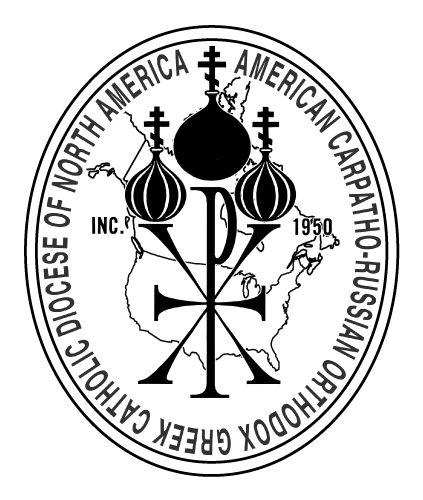Carpatho-Rusyn Prostopinije:Znamennyj Chant: Its Structure and Character
Hlasy and Phrases
The melodies of the znamennyj chant are organized into 8 tones or modes (hlasy). Each chant text is assigned to one of these hlasy, and must be sung to a melody of that tone.
The melodies are composed by the same method used by Byzantine chant; they are built up out of standardized melodic phrases. Each hlas contains a large number (up to several hundred) of these phrases.
The melody applied to a given text is composed by applying to each phrase of the text a melodic phrase, chosen from the total number of melodic phrases of the prescribed hlas. The melodic phrase can be shortened or expanded, depending on the number of syllables in the text.
Rhythm
The rhythm of the melodic phrase is free, in the sense that it cannot be divided into bars or measures; there is no time-signature.
Nevertheless, there is a definite rhythmic structure; long notes are balanced by groups of two short notes, or some multiple of two, so that there is a definite tactus&em; unlike the usual interpretation of Gregorian chant, in which all notes are given an equal rhythmic value.
The Cantor's Job
A skillful cantor, even in the 20th century, will know many znamennyj melodic phrases. When the chant books were written in neumes, every cantor had to know many hundreds by heart.
The Character of Znamennyj Chant
The impression made by the znamennyj chant upon the hearer is often described in terms of great nobility, objectivity, and dignity, combined with an ability to express and enhance the emotions evoked by the text.
This is no doubt a major reason why so many people find the prostopinije both movingly beautiful and profoundly peaceful.

A znamennyj chant melody from a Carpatho-Rusyn manuscript Irmologion of the late 18th century.
Bars have been added to mark off the musical phrases; these same phrases are found in many other melodies of Hlas I.
Next: The "Kiev" Chant and the Prokimen Tones
By Steven Reynolds, University of Oregon.
From the "Carpatho-Rusyn American", Vol. II (1979), No. 4, published by the Carpatho-Rusyn Research Society.

